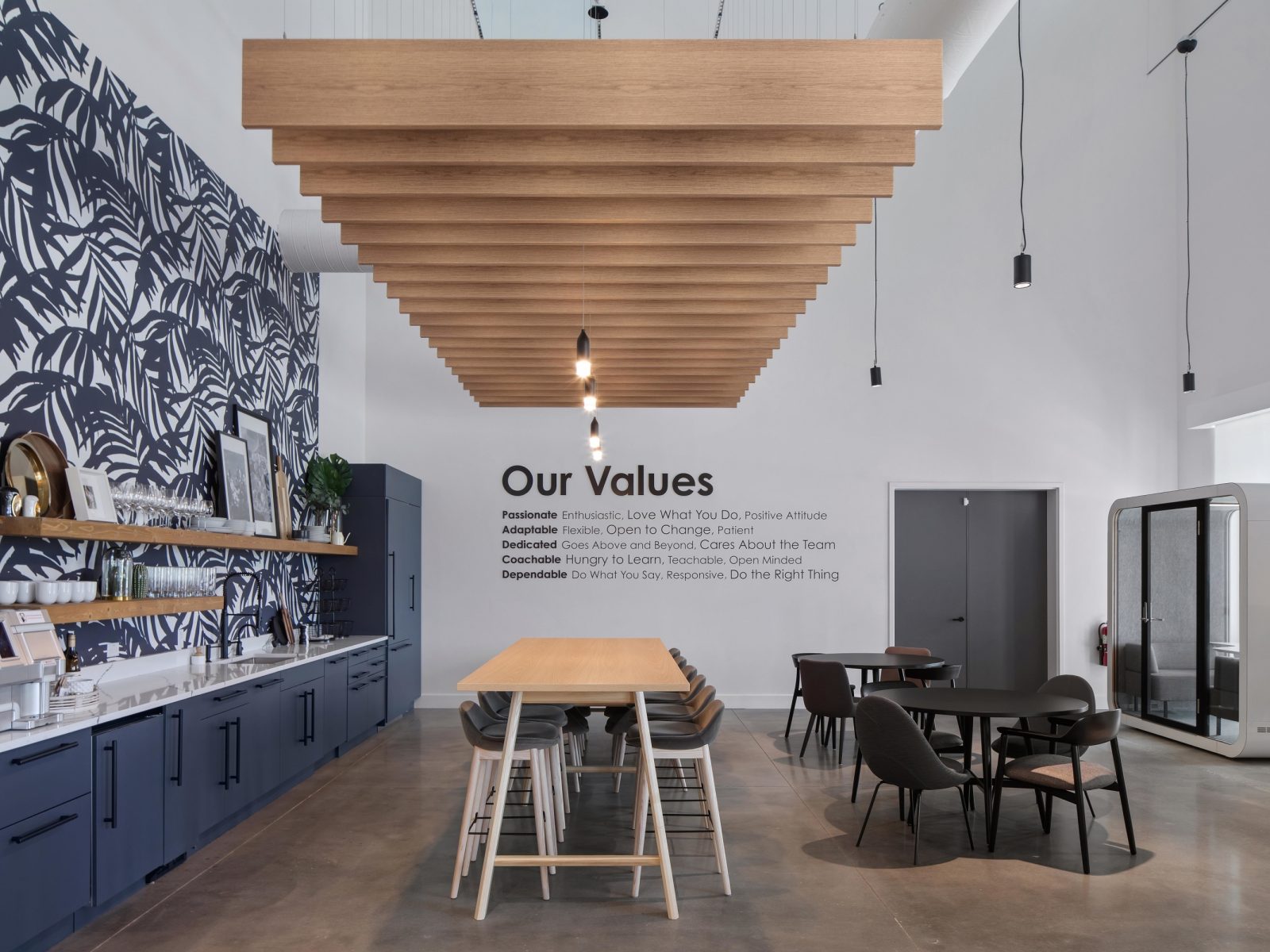Crafting the Optimal Office Space
With workplace strategies in flux, businesses are keeping a close eye on their real estate footprints as office utilization changes. The concept of "Right-Sizing" is taking center stage.

Over the past three years, the business community and office designers have been navigating the opportunities and challenges presented by the pandemic, a global turning point. This situation has solidified the work-from-home experience while also prompting a reevaluation of the traditional office space. Forward-thinking organizations are seizing this chance to lead the way in reimagining the workplace. By doing so, they can gain competitive advantages such as strategic positioning of their real estate, development of a future-oriented corporate vision, and establishment of a vibrant company culture that attracts and retains top talent.
Currently, companies are implementing various approaches as they adapt their corporate philosophies to the evolving concept of hybrid work. Within the same organization, there is a spectrum ranging from strict mandates to returning to the office to complete remote work. As workplace strategies remain in a state of flux, businesses are carefully assessing their real estate footprints in response to changing office utilization. This is where the concept of "right-sizing" comes into play, taking a central role in the decision-making process.
At first glance, right-sizing appears to address the straightforward issue of whether an office space is too large or too small for a company's needs. However, we delve deeper by asking both our clients and ourselves more profound questions, such as "Do we possess sufficient space of the appropriate kind?" and, moreover, "Are we burdened with an excess of unnecessary space?"
Developing an effective workplace strategy for your organization is a phased endeavor. When implemented successfully, it should be based on thorough research and embraced across the entire company.
To create a "right-sized" office environment for our own workforce, we have followed a six-step process:
1. Establishing Foundations
2. Conducting Discovery
3. Defining Objectives
4. Designing the Layout
5. Prototyping Solutions
6. Providing Guidance
By its very nature, right-sizing acknowledges that there is no universally applicable office solution. The initial stages of any right-sizing project involve engaging with organizational leaders to establish desired outcomes and determine the metrics for evaluating success.
The first crucial step in the design process is to pose essential questions that lead to optimal outcomes, including:
1. What is the purpose of our organization's physical office space?
2. Which experiences are best supported by the office environment, and which are better suited for virtual or home offices?
3. Does our office align with and effectively facilitate the desired balance of work activities and office culture, such as collaboration, connectivity, and productivity?
4. What unique amenities and experiences can our organization offer in the office to add value for employees and attract them to the workplace?
While addressing these inquiries, it is crucial to consider whether and why your employees found satisfaction in the office environment they left behind. Reflecting on what they miss in the post-pandemic era allows you to identify elements that can be recaptured and reignited.
Ultimately, the primary focus of any right-sizing endeavor should be centered around the holistic employee experience, extending beyond physical space and technology. The culmination of the process should involve the guiding phase, which entails capturing valuable insights, documenting the comprehensive workplace roadmap, and equipping employees with guidelines and tools to thrive in their new environment. This may even involve organizing culture-building events that foster learning, mentorship, socialization, wellness, and overall office enjoyment.
Guiding the office culture shift includes utilizing design elements to indicate areas for quiet focus or energetic collaboration, promoting a cultural acceptance of working from anywhere, encouraging employees to thoughtfully consider the tasks they need to accomplish, and finding the most suitable workspace accordingly.
While not all companies may be prepared or capable of executing a complete workplace right-sizing overhaul, it is an opportune time for experimentation. Testing out ideas with a limited and willing department or team can serve as a safe entry point to explore and identify meaningful and impactful solutions for organizational change.













